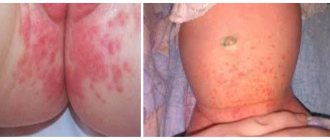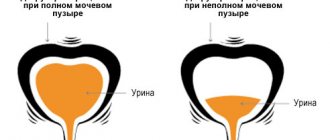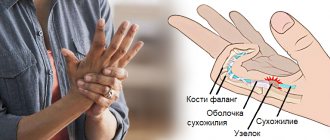Problem
Itchy skin can appear on any part of the body, but most often we experience it on the skin of the arms and legs.
It can begin at any time of the day, but it is especially unpleasant to experience itching at night, when it is most difficult for us to resist the urge to scratch the itchy area.
In addition, when we rest, the body produces less adrenaline and cortisone, but there is an increase in the production of the hormone histamine, which makes us feel itching even more. It can become a symptom of the development of an infection, in particular, foot fungus .
Allergy
Itching in the area of the legs, knees, and inner thighs is one of the manifestations of an allergic reaction of the body. The list of allergens is quite extensive. Moreover, it is not common to all people. Each person has their own individual list of allergens. For some it is small, for others it is extensive. Note that susceptibility to allergies also depends on the state of immunity of a particular person. The more actively the body’s defenses work, the less likely it is that allergic reactions will occur.
There are several groups of allergy pathogens:
- Food. In particular, these are dairy and fermented milk products, citrus fruits, vegetables, sweets, etc.
- Medical supplies.
- Animal bites (particularly insect bites).
- Household allergens. These are household chemicals and cosmetics, synthetic materials, dust, etc.
- Pollen from flowering plants.
Allergies can manifest themselves not only as itching in the lower leg area. This is constant lacrimation, frequent sneezing, coughing, the appearance of skin rashes in the form of small pimples, etc. The condition brings the patient a lot of inconvenience and worsens his quality of life. Moreover, when scratching, it is easy to introduce an infection into the wound, which will add serious health problems.
What can cause itching
Among the most common causes of itching, it is worth mentioning excessive dry skin, which leads to the fact that the skin on the legs begins to peel. If no rashes appear on the skin, then this is perhaps the most important cause of itching.
It can also be caused by excessive sweating of the feet and very damp skin.
The appearance of a rash may indicate an allergy (allergic contact dermatitis) to clothing, medications, cosmetics, or chemicals, so if you notice a rash, you can try using a different laundry detergent, soap, or wearing clothes of other materials.
In addition, the rash can be a symptom of a fungal infection (for example, athlete's foot) or indicate eczema, dermatitis or psoriasis.
- Eczema is a disease that causes skin cells to become inflamed and cause severe itching. With eczema, cracks appear on the skin, they become inflamed, and blisters may appear. Some researchers believe that people with eczema have spaces between their skin cells that allergens happily take advantage of.
- The appearance of dermatitis can be explained by several reasons, but it is always a reaction of the skin to excessive dryness , allergens and irritation. Chronic dermatitis can be caused by a bacterial infection because cracks in the skin may appear as the dermatitis progresses.
- Toenail fungus is a fungal infection that usually begins to develop in the space between the toes. Symptoms of fungus can include itching, red rashes, which, if left untreated, can spread to the entire foot. With further development of the infection, the skin may crack, which also brings discomfort.
- It is believed that psoriasis is an autoimmune disease, but it is unlikely that anyone can accurately name its cause. It usually develops when, under normal conditions, the immune system begins to react as if it is defending itself against threats. Symptoms of psoriasis include skin redness, blistering and flaking.
Reasons usually include:
- bacterial or viral infection;
- diseases that weaken the immune system;
- stress;
- sudden change in weather;
- taking certain medications;
- cuts, burns and abrasions.
What happens and what causes itchy skin?
There are localized and generalized skin itching.
Localized skin itching
Localized
called itching concentrated in one place. Most often this itching is observed in the area:
- anus (for hemorrhoids, worms, inflammation of the rectum);
- external genitalia (in case of disease of these organs, as well as in women - during menopause);
- scalp (pediculosis).
Localized itching can also be caused by dry skin, insect bites and allergic reactions.
Itching all over the body
Generalized
(that is, widespread throughout the body) itching can be caused by various reasons, including:
- liver diseases (including viral hepatitis);
- endocrine diseases (for example, diabetes);
- some blood diseases;
- skin diseases;
- mental disorders;
- some oncological diseases.
How to stop itching
The difficulty is to break the vicious circle of itching/scratching, and this is not at all as easy as it seems.
Cold showers, baths, and ice packs can help numb the itching.
Moisturizing should be the first step to getting rid of eczema, as moisture can help block the spaces between skin cells where allergens multiply. You can also use one of the over-the-counter medications to treat your symptoms.
If the itching continues to haunt you, it is recommended to consult a doctor.
Folk remedies
If you are sure that the cause of itching in the shin area is non-pathological, turn to proven folk remedies that will ease the manifestation of the symptom:
- Baking soda compresses.
- Lotions with infusions of medicinal plants - aloe, chamomile, calendula, sage.
- Apple cider vinegar compresses.
But even in this case, you should not resort to self-medication. Use these products only with the approval of your healthcare professional.
How to prevent itching
Hygiene of the skin of the feet is the main ally in the fight against itching, along with proper skin hydration.
Also try to wear socks made from natural materials and use breathable shoes. Foot fungus occurs when your skin is too wet, so try to always dry your feet after showering and don't let your feet sweat too much.
In addition, you do not have to worry too much about the fungus, because there are many drugs that can help you get rid of it at home. They will help you get rid of infection and itching.
The main thing is to remember that you need to put on socks and shoes only after your feet are completely dry.
Vascular diseases
Varicose veins on the legs in men and women can also begin to manifest themselves with itching in the lower leg area. With this disease, the venous walls lose their elasticity, the ability to narrow and stretch. The integrity of the venous valves may be compromised, causing pressure in the vessels to increase and blood stagnation to occur.
The causes of varicose veins on the legs in men and women are usually the following:
- Hard physical work.
- Wearing uncomfortable shoes.
- Systematic lifting of weights.
- Excess weight.
- In the male line - genetic predisposition.
- Sedentary, sedentary lifestyle.
- Wrong diet.
- High blood viscosity.
- Having bad habits.
- Diseases of the heart and blood vessels.
At the initial stages, the disease may manifest itself with itching in the lower leg area. But it is rarely the only symptom. The patient also complains of the following:
- Feeling tired in the legs.
- Feeling of heaviness in the lower extremities.
- Swelling after exercise.
- Feeling of "swelling" in the legs.
- Decreased sensitivity of the skin of the lower extremities.
- Feeling as if the legs are full of fluid.
- The appearance of vascular networks.
How to relieve leg swelling caused by heat
The best medicine in this case is gravity. Arriving home and throwing away the shoes that have become a vice, it is enough to lie down and place your feet higher (at a minimum - on several pillows, at a maximum - against the wall).
When it becomes easier to move, you need to take a shower. Ideally, a contrasting one that trains blood vessels, but you can limit yourself to just cool. In this case, you should direct the pressure to the feet: such a hydromassage will restore blood circulation.
You can disperse the fluid with light exercises: pulling the toe towards you and away from you, rotating your feet, squatting. But if you don’t have the strength to do this, and your legs hurt, it’s better not to torture them.
Foot baths are also useful. Even plain water will provide relief, but you can enhance the effects with additives. This could be sea salt or herbal infusions. Compresses made from cabbage leaves or bandages soaked in a decoction of birch leaves improve the condition of the limbs.
Why do both legs swell?
If by the end of the day both lower limbs are swollen, it means that excess fluid is present throughout the body. Most often this condition is caused by:
- heat;
- excessive fluid intake;
- obesity;
- uncomfortable shoes (tight, high heels, completely flat soles);
- flat feet;
- unhealthy diet (lots of salty and spicy foods in the diet);
- standing on your feet for a long time or in an uncomfortable position.
Fluid stagnation in these cases is caused by improper load distribution. None of the above indicates a threat to life, and the swelling goes away in a day or two. For some, it is enough to take off their shoes and relax, while others resort to folk remedies to relieve discomfort. But symmetrically swollen legs can also indicate more serious diseases that require urgent treatment.
Why does one leg swell?
If the swelling is asymmetrical, its cause is localized directly in the affected limb. Swelling may occur due to bruises on the legs or more serious injuries:
- ankle joint injuries;
- meniscus tear;
- separation of the calf muscle;
- bone fracture;
- tissue compression.
Venous edema is also most often unilateral. Varicose veins cause fluid stagnation, but they are localized in one limb where the vessels are affected. This is indicated by the characteristic venous network.
Thrombophlebitis disrupts blood circulation, and at the same time the outflow of fluid from tissues. In this case, swelling is accompanied by other unpleasant symptoms: fever, pain, compaction in the blockage area.
Itchy feet below the knees in winter
Sometimes the pathology is seasonal, and the legs below the knees itch only in winter. To understand what to do, you need to identify why this is happening.
- Allergy to the material from which winter clothing is made. Warm clothes that keep you warm in cold weather are mostly synthetic. Your feet may not be cold, but still get irritated from contact. Or there may be a double reaction: itching from hypothermia and friction with synthetics.
- Cold dermatitis. An inflammatory reaction to cold, which is expressed by red itchy spots and cracks in the skin. It appears in most cases on open areas of the body, as well as on the knees and below.
- Allergy to cold. In the cold, histamine is released, causing the calves to itch.
- Exacerbation of chronic dermatological diseases. In winter, chronic diseases can worsen, and other than the usual course of treatment, no measures will help.










